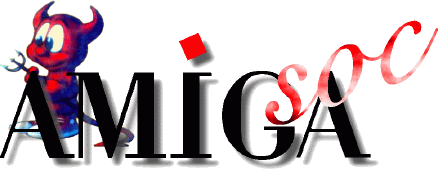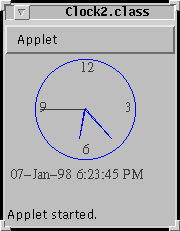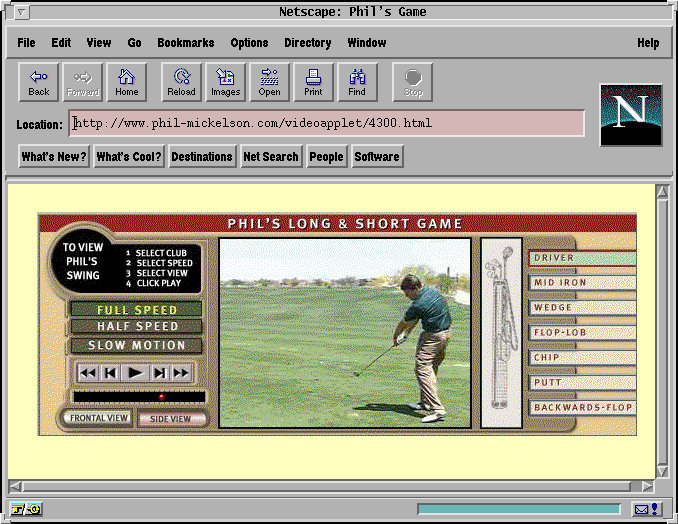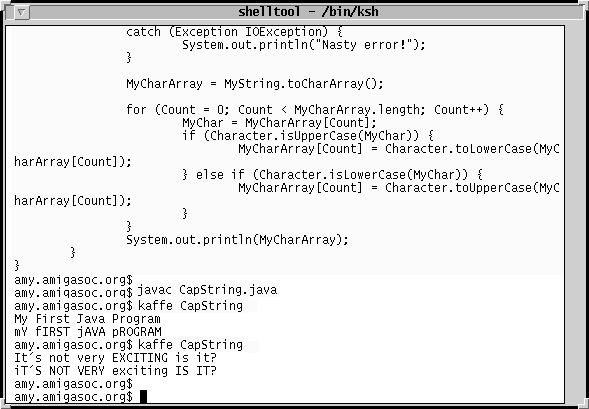
Java Palava

 | Quite simply Java is a programming language, however unlike any other programming language Java has been designed to run on any computer platform without requiring any changes being made to the program code itself, something many software developers have been wishing for for many years. More importantly to the Amiga community it means that an Amiga capable of running Java programs would not be limited to programs developed specifically for the Amiga, but could also use the vast range of Java software developed for the PC and Unix market. |

LDTAIL = -lm -lcLDTAIL = -lmpackages/tjwassoc.co.uk/APIcore/lib, packages/tjwassoc.co.uk/APIzip/lib and kaffe/kaffevm. You may also need to remove the compiler flag -O2 from the Makefile in kaffe/kaffevm if you have less than 32 Megabytes of memory. |
Listing 1 shows a simple Java program that converts uppercase text to lowercase and vice versa. The reason I'm showing you this program instead of the obligitory "Hello World" program is to illustrate the differences between a language such as Java and the scripting languages such as Perl and Shell scripts we have been looking at previously. If you cast your minds back you will remember that the case conversion script we wrote in chapter 4 was little more than 3 lines of code. You will probably also notice the similarity between the Java code and that of C or C++. Whilst Java may look like C/C++ it lacks many of the fuctions of these languages, such as typedefs and operator overloading. Infact Java acts more like dynamic languages such as Smalltalk and Lisp. Unfortunalty to cover any more then the very basics of Java would require six more tutorials, and this, unfortunalty is my last (for now!). However I have included as much Java documentation as I can get my hands on, on the CD for you to browse at your leasure. |